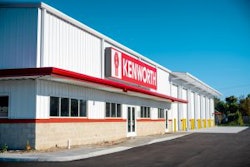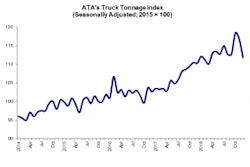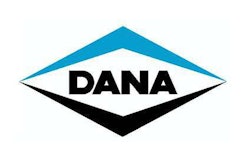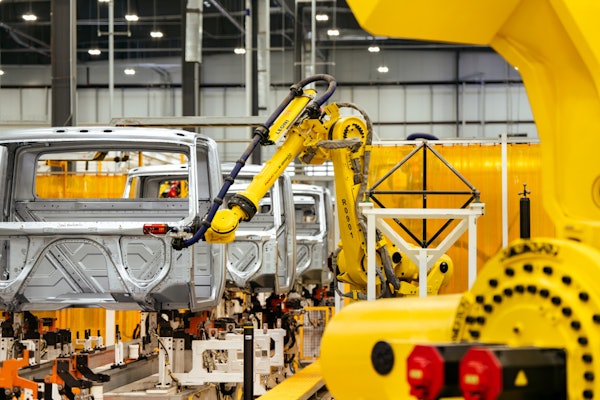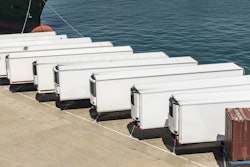That e-commerce is coming to trucking is no secret. That hasn’t been a burning question to me for at least two years. Ask any of your fellow dealers, suppliers or even your aftermarket competitors. Anyone who is selling parts online will tell you that segment of their business is on the rise.
No, the big question for trucking isn’t “Will we see e-commerce?” but “How is e-commerce going to change our industry?”
On Tuesday the American Transportation Research Institute (ATRI) released the most comprehensive report I’ve seen in our market that focused entirely on answering that question.
Identified a top research priority in 2017 by the institute’s Research Advisory Committee, ATRI’s study and corresponding report had two main objectives:
- To provide background on emerging e-commerce and omni-channel retailing trends, as well as on the ongoing transformation in retail supply chains and distribution/fulfillment networks;
- Map the effects of e-commerce to trucking operations and ATRI’s 2018 Top Industry Issue.
In reading the report data, I think ATRI hit both objectives on the head. Using a combination of data amassed through industry research, national consumer behavior information and distribution models, ATRI has compiled clear statistical evidence to demonstrate exactly how much e-commerce is altering our conventional parts distribution process.
Here are some of my favorites. Err, not favorites. More like some of the most eye opening. Take a look:
- ATRI reports e-commerce sales from 1999 to 2017 increased from less than 1 percent of total U.S. retail sales to more than 9 percent, a 3,000 percent increase.
- Annual growth of traditional retail sales has been between 1 and 5 percent over the last five years. In the e-commerce channel, that growth has ranged from 13 to 16 percent annually.
- Regarding brick-and-mortar distribution, ATRI says there were 2,130 fewer department stores and 385,000 fewer jobs at these stores in 2017 compared to 2015. Additionally, 1,937 more courier services began operating during this same period.
- Between 13 and 30 percent of online orders are returned. The return rate on in-store purchases is 8 percent.
- Amazon already owns 7,500 trailers (and 32 cargo jet freighters) to help manage its hauling operation.
- E-commerce is replacing inter-regional and national hauls with shorter intra-regional and local hauls. Exhibit A: ATRI says the average length-of-haul for dry van truckloads has declined by 37 percent (about 296 miles) since 2000.
This is just a taste. If you download the report (found in the link above), the numbers go on and on. As such, I’m not going to prattle on here that “you need to prepare for e-commerce.” ATRI’s 49-page report makes that point abundantly clear.
But, I will add, one unintended consequence of the e-commerce revolution is how it is further exacerbating our driver shortage. ATRI says the number of intra-regional and last-mile truck trips are on the rise but trip lengths are decreasing. Additionally, urban vehicle miles traveled are way up, as is trucking congestion. (ATRI states the impact of traffic congestion on trucking industry operations was $74.5 billion in 2016 and 91 percent of that congestion occurred in urban areas.)
So, while we’re no longer asking most truckers to run four- or five-day routes, we are asking them to drive on extremely busy roadways at some of the busiest times of the day. If that’s not enough, our infrastructure wasn’t built to handle this consumer shift, meaning many of those same roads are woefully inadequate to withstand this many commercial vehicles — even in non-peak hours. Then there’s the delivery expectation. These truckers are sitting in traffic and getting honked at and yelled at by the very people to whom they are delivering packages. And oh yeah, and we need more of these drivers, not fewer.
What does this mean for us? I think a few things stand out. One, providing uptime should forever be your No. 1 priority. Your customers cannot afford to have a truck sit for one minute longer than is absolutely necessary. They can’t risk their shippers abandoning them because their freight needs to be on the road. Nor can they risk their drivers bailing because they got sick of the stale coffee in your waiting room.
But also, I think we need to be prepared for a bit of an intra-industry employment battle. One big sell for becoming a technician over a driver has always been stability. “You get to go home every night.” That’s becoming the norm for drivers as well. As fewer and fewer loads require multi-day routes for a single driver or team, the fleet community is going to promote the regionalization of its business to prospective employees — some of which I’d bet would also be prospects for your parts, service and delivery departments.
If you want to continue to draw those employees you better prepare compete with your customers.


